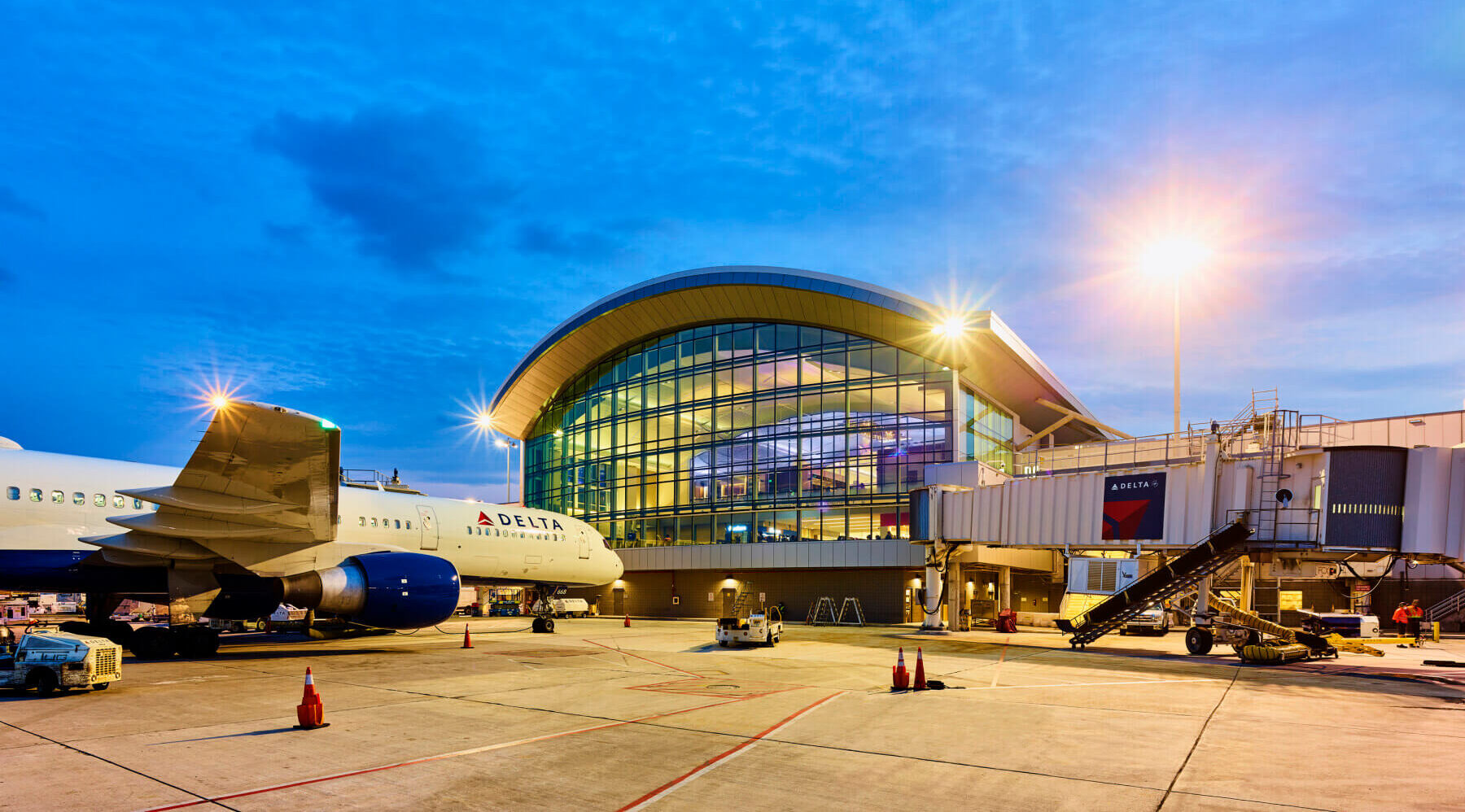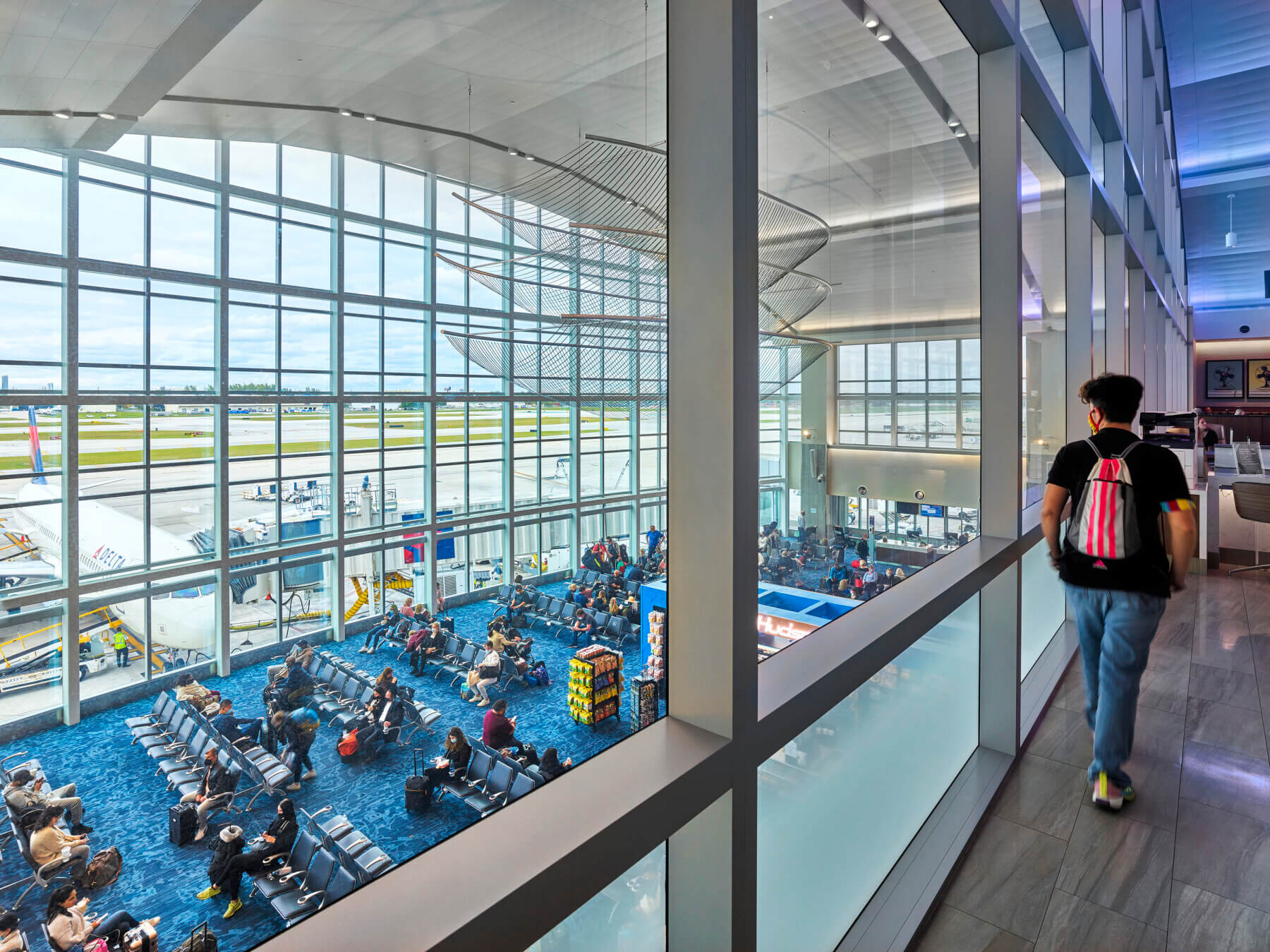Reimagining the Entire Terminal in an Active Construction Zone
Bordered by Terminal 1 and Terminal 3, the modernization and expansion of Terminal 2 needed to occur in place and to optimize any space available. When a project can’t expand horizontally in any direction, the only way is up. This meant that the modernization and repurposing of the space was completed while maintaining all airport operations from check-in to the boarding process. Gresham Smith embraced the challenge and provided complete project management, architecture, interior design, structural engineering, and environmental graphics and wayfinding services for the entire facility.

Creative Engineering
Vertical expansion and addition of a mezzanine made an obvious impact, with the end result being a grand, bright and airy space. But other impacts of the expansion are less visible…the structural impacts. The footings and the columns in the existing building couldn’t accommodate the extra weight or the wind load the expanded building would experience. To minimize impacts from construction, and avoid tearing and up and shutting down entire portions of the airport, we connected to the existing footings with additional support. To reinforce the columns, we worked from the inside out, inserting rebar and then putting new concrete around the columns to widen them.
Taking the Passenger Experience to New Heights
Our scope involved expanding and relocating the existing security checkpoint, as well as expanding and renovating the terminal’s ticketing area, gate seating, restrooms and concessions court. The modernization efforts at Terminal 2 provide a multistory space that allows for the addition of a mezzanine – including space for a new Delta Sky Club – that not only facilitates better passenger flow, but also creates a more open and modern feel. In aesthetic context with the upgrades to Terminals 1, 3 and 4, Gresham Smith’s crisp, clean and contemporary interior design strikes a subtle balance between warm and cool materials, creating a more welcoming atmosphere to enhance the passenger experience.

Sustainable Solutions for the Long Term
LEED Silver certified, the building’s sustainable components include locally sourced materials, low-flow fixtures, all-new automated electrical systems, and clerestory windows that add abundant natural light. The terminal serves as a vital connecting point between Terminals 1, 3 and 4, providing additional flexibility.